Wimbledon
Before Federer & Nadal's 40th match, an oral history of their pinnacle
By Steve Tignor Jul 11, 2019Wimbledon
The battle for No. 1 & more: Four WTA takeaways from the Wimbledon fortnight
By Joel Drucker Jul 17, 2023Wimbledon
Can anyone stop Alcaraz or Djokovic? Four ATP takeaways from the Wimbledon fortnight
By Joel Drucker Jul 17, 2023Wimbledon
Carlos Alcaraz's Wimbledon trophy keeps him at No. 1, Marketa Vondrousova's lifts her to No. 10
By Associated Press Jul 17, 2023Wimbledon
Analysis: Carlos Alcaraz's Wimbledon title shows he is exactly who everyone thought he was
By Associated Press Jul 17, 2023Wimbledon
Wimbledon champ Carlos Alcaraz shows us there’s no need to rein in expectations for him
By Steve Tignor Jul 16, 2023Wimbledon
Hsieh Su-Wei and Barbora Strycova win second women's doubles title together at Wimbledon
By Associated Press Jul 16, 2023Wimbledon
Novak Djokovic rues his missed chances after losing a highly entertaining Wimbledon final in five sets
By Associated Press Jul 16, 2023Wimbledon
Fairytale Finish: Barbora Strycova wins last Wimbledon with Hsieh Su-Wei
By David Kane Jul 16, 2023Wimbledon
Carlos Alcaraz becomes sixth player to defeat Novak Djokovic in a Grand Slam final
By Matt Fitzgerald Jul 16, 2023Wimbledon
Before Federer & Nadal's 40th match, an oral history of their pinnacle
The two celebrated champions competed for the 2008 Wimbledon title in a match that's never been forgotten—and that many say is the greatest in tennis history. Eleven years later, they finally meet again at the All England Club.
Published Jul 11, 2019
Advertising
As Rafael Nadal and Roger Federer prepare to face off for the 40th time on Friday, it's hard to believe that their last meeting at Wimbledon came 11 years ago, in a final that many call the greatest tennis match ever. To commemorate it, we look back with five people who were involved in the match—a radio broadcaster, a TV commentator, a fan, a journalist, and a former coach. Judging by their recollections, it wasn’t just the players who had a special experience that afternoon in London.
(This oral history originally ran last summer, to commemorate the 10th anniversary of the match.)
The Swiss and the Spaniard had been ranked No. 1 and No. 2 for three years, and had established their rivalry as one of the most riveting in any sport. Each summer, their clashes took on titanic proportions as they crossed the English Channel and attempted to invade each other’s empires.
In 2006 and 2007, Nadal and Federer met in the finals at the French Open and Wimbledon. Nadal, the king of clay, won twice at Roland Garros; Federer, the king of grass, won both times on Centre Court. In Paris in 2008, Nadal surrendered just four games to Federer in the French Open final. Could Federer, the five-time defending champion at Wimbledon, answer Nadal’s challenge at the All England Club one more time?
The first point of the match gave the world an indication of what was to come, and who would eventually prevail. Standing toe-to-toe at their respective baselines, Federer and Nadal engaged in an exquisitely ferocious 14-shot rally, before Nadal finally hooked a forehand a few inches out of Federer’s reach. The match was barely a minute old, and the crowd was already letting out gasps.
They would continue, with few let-ups, until the last ball was struck nearly seven hours later.
At 9:16 p.m., as a victorious Nadal fell to the grass and flashbulbs popped around a darkened Centre Court—the atmosphere was literally electric—the match was already being hailed as the greatest of all time. Even its 6–4, 6–4, 6–7 (5), 6–7 (8), 9-7 score had a symmetrical, escalating beauty.
Eleven years later, no contest has come along to knock this one from its Olympian perch. The 2008 Wimbledon men’s final, like so many other sporting events that ascend to legendary status, belongs to all tennis fans.
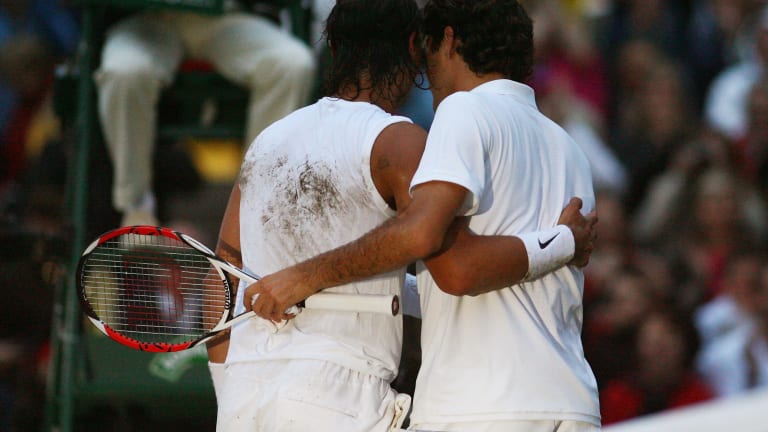
Before Federer & Nadal's 40th match, an oral history of their pinnacle
© 2008 Getty Images
Advertising
David Law, BBC Radio Commentator and host of "The Tennis Podcast": I began the match in the very back row of the stadium, in our second commentary box on BBC Radio 5 Live. Every person driving a car in the UK that wanted to follow the final would have been listening to us; and that felt like just about everyone in the country that day.
There was a sense of anticipation unlike any final I had experienced before. With two Wimbledon finals between them already, and Nadal’s Roland Garros destruction of Federer a couple of weeks earlier—followed by his first title on grass, at Queen’s Club—it did feel like, if ever Rafa was going to do it, this was going to be it.
There was a short rain delay to start, but that only heightened the tension. I remember seeing the two of them on the TV in my commentary box, waiting to come on court. Federer dressed in a cardigan-style sweater and white trousers, Nadal in a sleeveless shirt. The contrast couldn’t have been more stark. Federer looked as if he was about to attend an English garden party for a cocktail, Nadal looked as if he was on his way to a wrestling ring.
The noise that greeted them as they stood up from their courtside chairs is something I will never forget. My first words were, “The two best tennis players on the planet by a country mile.”
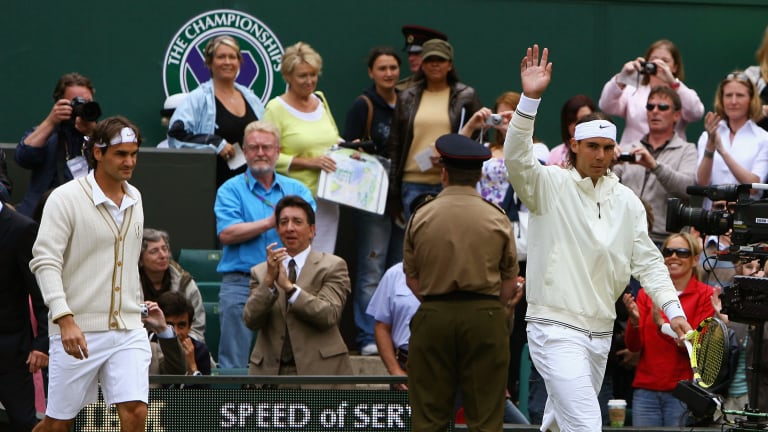
Before Federer & Nadal's 40th match, an oral history of their pinnacle
© 2008 Getty Images
Advertising
Ted Robinson, Tennis Channel and NBC television commentator: By 2008, I had been doing Breakfast at Wimbledon for eight years, but this day felt like it called for something more. Nadal versus Federer was more than a match, it was two champions who had established their turf and were going to war over it. We had known for a long time that Roger was one of the greats, but by 2008 Rafa had joined him. For one of them to win on the other’s surface would be a major sea change in the game.
It wasn’t a glorious, sunny day the way it was the previous year. The clouds and the forecast for rain made everything uncertain, and seemed to raise everyone’s anxiety levels a little. You felt from the start that we were a long way from knowing who the winner was going to be. That feeling just kept getting more excruciating.
At Wimbledon there are places it’s understood that you can’t go. But for the first time, John [McEnroe, Robinson’s co-commentator] and I were able to tape our opening from inside the club, in front of the plaques where the past champions are listed. That sense of history, seeing John’s and Bjorn [Borg]’s names there, felt appropriate for the day.
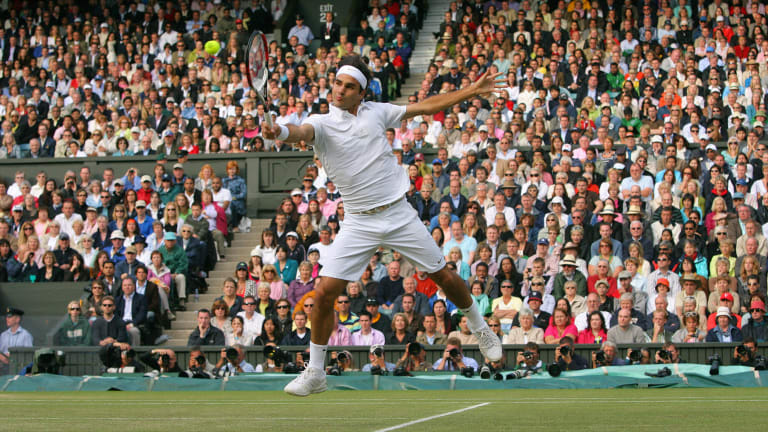
Before Federer & Nadal's 40th match, an oral history of their pinnacle
© AFP/Getty Images
Advertising
Beth Wilson, photographer and founder of former fan site NadalNews.com: I remember waking up in my house in Austin, TX, and turning the match on right away. I hadn’t been watching a lot of tennis, and I didn’t have cable. I wasn’t really a big sports person, but my grandma loved tennis, and we used to watch it together when I was younger. We would also watch matches over the phone. She loved Borg, and thought McEnroe and Jimmy Connors were punks. When I called her during the 1980 Wimbledon final between Borg and Mac, she was so into it, she said, “I’m in the middle of watching this, I can’t talk to you now.”
I always needed a player, a personality, to get me into tennis. I was a huge Mats Wilander fan, but I stopped watching in the ’90s, during the Pete Sampras-Andre Agassi era, and no one had brought me back. I had seen Nadal a few times and was interested, but mainly out of curiosity, because of the way he looked. The first time I saw him was at the French Open in 2005, when he had the pirate pants and sleeveless shirt. I said, “What the hell is this outfit this weirdo is wearing?” He seemed so dark and mean, too.
But then I saw him in the 2006 Wimbledon final against Federer, where he lost the first set 6–0. When he held serve to start the second set, he did a big “Vamos!” and I thought, “Awww, that’s cute, he still thinks he can win.” It wasn’t until the 2008 French Open final, when he beat Federer so badly, that I thought, “This guy really is a great player.”
So I wanted to see what he would do at Wimbledon. The match started, and I saw the first point, which was incredible. I was like, “Oh, I have to get out of bed for this.”
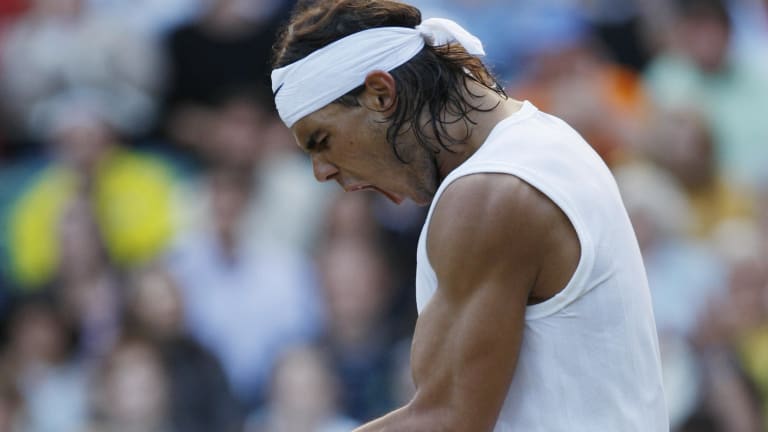
Before Federer & Nadal's 40th match, an oral history of their pinnacle
© AFP/Getty Images
Advertising
Jon Wertheim, Sports Illustrated senior writer; author of Strokes of Genius: At the beginning of the year, I had a contract to write a book about Federer. Then he lost the Australian Open final to [Novak] Djokovic, and the French Open final to Nadal, and I’m wondering if I still have a book.
I was still wondering that after the first two sets, because Federer lost them pretty quickly. Then there was a rain delay, and Federer got through the third set, and the vibe changed from a blowout to a battle. That’s when the story started, and eventually my book would be about this match. It had every element of a classic. The rain, the darkness, the suspense of whether they would finish, the contrasts between the two that you couldn’t make up. But they were both likable guys, too, and they liked each other. This wasn’t Red Sox and Yankees, where there was bad blood. When these two played, it was like you were rooting for tennis.
I was also on deadline for Sports Illustrated, and I remember running between my seat in Centre Court and my desk in the press room, scrambling in and out to see the match and then come back and write something about it. You never knew what was coming. Were they going to play, or come off the court? Was it going to rain, or hold off? Was Nadal about to take down Federer, or was Federer about to stage the biggest comeback of his career?
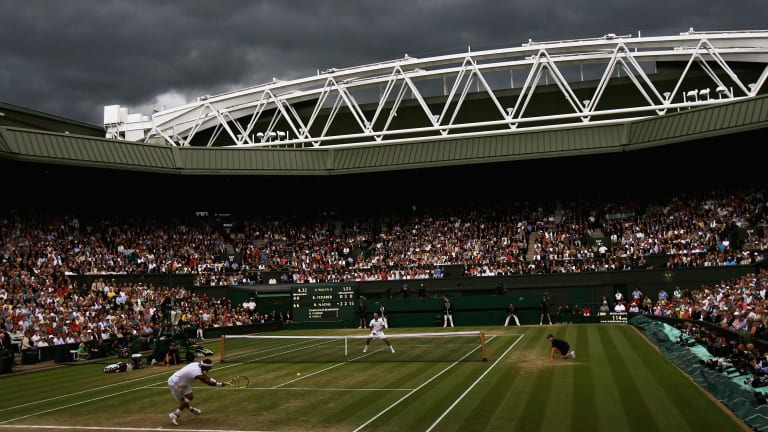
Before Federer & Nadal's 40th match, an oral history of their pinnacle
© 2008 Getty Images
Advertising
Brad Gilbert, ESPN tennis analyst; former ATP player and coach: I was watching with [colleague] Chris Fowler. We had pretty good seats, and we weren’t calling the match. But we had to come out for it. How could you not?
I was slightly leaning toward Fed to win, but was just hoping for a good match. Then Rafa comes out and wins the first two sets, and I’m thinking this is going to be over in a hurry. I think it was the third-set tiebreaker where Fed ripped off a couple of winners, the crowd erupted, and I had this feeling, “Strap in.” From there it was a great match.
It’s hard to play a high-level match on grass because it’s a tricky surface. But both Fed and Rafa slugged back and forth with huge swings, and got to so many balls that no one else would have come close to. In that small arena, where the ball echoes, the match had a heavyweight-fight feel. It might not have been their best match, quality-wise, but it was about 50 times better than any match on grass I’d seen.
But this one was about the drama. There were rain delays, which we don’t have on Centre Court anymore; it was the last year without the roof. It got to be 7:30, 8:30 p.m., getting darker, and I’m saying, “Are they going to get this in? Are they going to restart this so late?” It was sweaty-palm time.

Before Federer & Nadal's 40th match, an oral history of their pinnacle
© 2008 Getty Images
Advertising
Ted Robinson, Tennis Channel and NBC television commentator: At a certain point, the length of the match, and the uncertainty, got to be mental torture for those of us watching it; I can’t imagine what it was like for the players and their families. John and I were down in the little NBC booth at court level that I called the cockpit. Everything peaked in the fourth-set tiebreak, just like it had for John against Bjorn in 1980, when he won their tiebreak 18–16.
That’s when I had my most vivid memory of this match, and that it was going to be something special: when Roger ran out to his left and whipped a backhand down the line for a winner, without any hesitation, to save match point. That wasn’t a shot you saw him hit in those days. It was as if this great player had been forced or inspired by Rafa to do things even he normally couldn’t do.
And then, just when we reach that peak, there’s [referee] Andrew Jarrett, with his walkie-talkie, looking up at the sky. I’ll never forget when the word came down from Dick Ebersol at NBC that John and I should just talk through the rain delay, and that we wouldn’t cut to anything else—no replays or classic matches. So we lowered the glass in the cockpit window to get a view of the court, and John and I talked until Roger and Rafa came back on. That was something special for me.
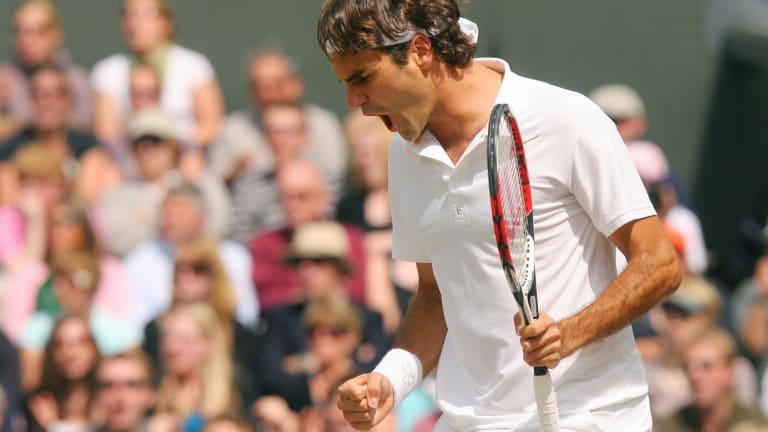
Before Federer & Nadal's 40th match, an oral history of their pinnacle
© AFP/Getty Images
Advertising
David Law, BBC Radio Commentator and host of "The Tennis Podcast": Two shots stayed with me: the forehand down the line that Nadal hit to set up match point in the fourth-set tiebreak; and the backhand down the line that Federer hit to save it, off a violently ripped Nadal crosscourt forehand. I remember a colleague of mine, after those shots, crying, “You could not make this up!”
For the first four sets, I sat courtside, feeding stats into the broadcast. At the end of the fourth, I left my position. I arrived in our production room and the editor said, “Why have you left? We might want to bring you in again for some stats.” I said, “Stats feel irrelevant now. Just let people hear what’s happening. That’s enough.”
With Nadal so close to winning, I thought of an encounter I’d had with him a few weeks earlier. I was running the media department at Queen’s Club, and Rafa came there the day after winning the French Open. As he walked in, rain started to fall, but he walked out to the practice court, passing other players coming in the opposite direction. “Could you put the net back up please?” Nadal asked the groundsman. “Rafa, it’s raining, you can’t practice in this,” the groundsman replied.
But he relented, and Rafa hit for about half an hour.
A few years later, Rafa came back to Queen’s, and the first thing he did was walk to center court and rub his palm over the surface. Maybe it was his way of switching from clay to grass—he needed to feel the court. As great as he is on clay, Wimbledon was the title he most wanted to win.

Before Federer & Nadal's 40th match, an oral history of their pinnacle
© AFP/Getty Images
Advertising
Jon Wertheim, Sports Illustrated senior writer; author of Strokes of Genius: Nadal lost the fourth set after having championship points; how could he recover from that? During the rain delay at the start of the fifth, I went down to the locker room and saw Toni Nadal walking out after talking to Rafa. I asked him in German how his nephew was doing, expecting him to throw his hands in the air. But Toni, who never sugarcoats anything, smiled and said something like, “He’s not doing as badly as you might think.”
He was right, because Rafa held steady through the fifth set. With both players holding serve, and my deadline coming up, I had two pieces ready to go. In one, Federer had made a stirring comeback. In the other, Nadal had pulled off a coup and planted his flag on Federer’s turf. They were both great stories; it’s a shame only one could run.
But I felt like both came together with Nadal’s celebration at the end. The most memorable image for me was seeing Robert Federer, Roger’s father, help Rafa up into the player box after he had just beaten his son. You wouldn’t see that in other sports, and it summed up the day for me.
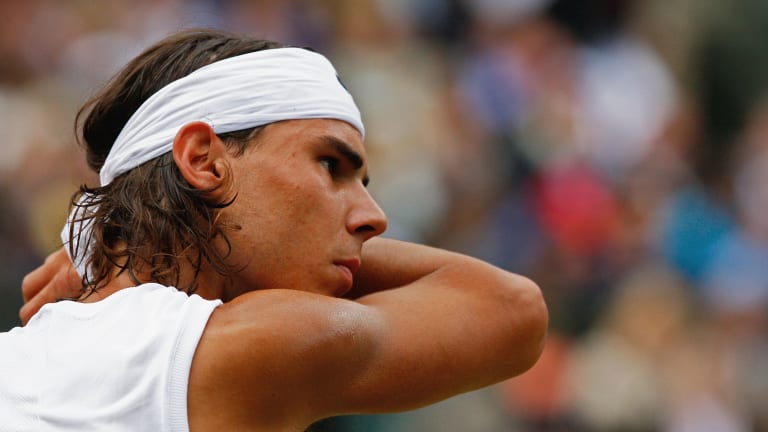
Before Federer & Nadal's 40th match, an oral history of their pinnacle
© 2008 Getty Images
Advertising
Beth Wilson, Photographer; founder of former fan website NadalNews.com: Through the third and fourth sets, I got more and more invested in the match. The whole time, neither Nadal or Federer really went off their games or gave anything away. It was tension on every point.
When Rafa blew it in the fourth-set tiebreak, I’d been sitting there for hours, but I couldn’t stop watching now. When he finally won, I really loved his celebration. He had been so serious for so long, and then he let it all out—fell down, climbed into the Royal Box with the camera flashes going off. I liked seeing that emotional switch in him.
After it was over, I signed up for cable and looked to see when the next tournament was. In 2009, I saw my first live tennis match; since then I’ve traveled around the world to see it. Rafa and this match were my way back into the sport.
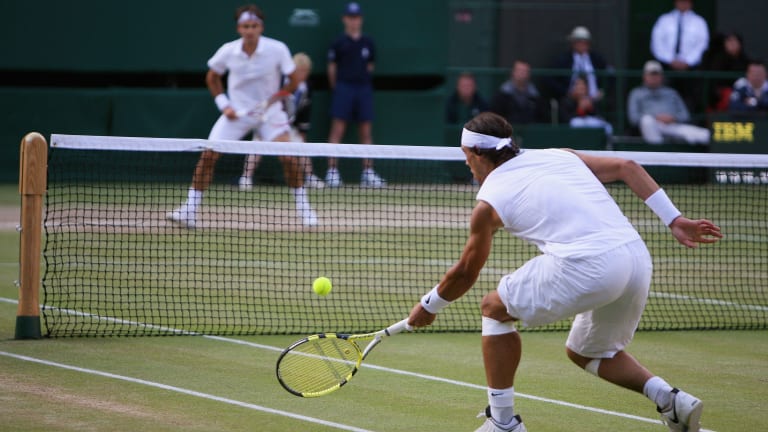
Before Federer & Nadal's 40th match, an oral history of their pinnacle
© 2008 Getty Images
Advertising
Brad Gilbert, ESPN tennis analyst; former ATP player and coach: It was already dark when they went back out on court for the last time; I wasn’t sure they would even try. By then, I felt like I was watching something huge, like Borg vs. Mac, when Borg lost the tiebreaker and still won the fifth set. That’s what Rafa did this time. He showed some amazing mental fortitude to find a way to put the fourth set out of his mind and win. To me, Rafa’s win in the fifth set is the ultimate in competing.
Afterward, we went up to the studio to talk about it, but what do you say? We had Rafa come in, and sometimes I ask players if I can have one of their racquets to put up in my shop. I asked Rafa if I could have one of the Babolats he used in the match. You never know how someone might react in those situations, but he just said, “Yeah, come down to the locker room.” So I went down there, he signed it—and now that Babolat is framed and hanging up.
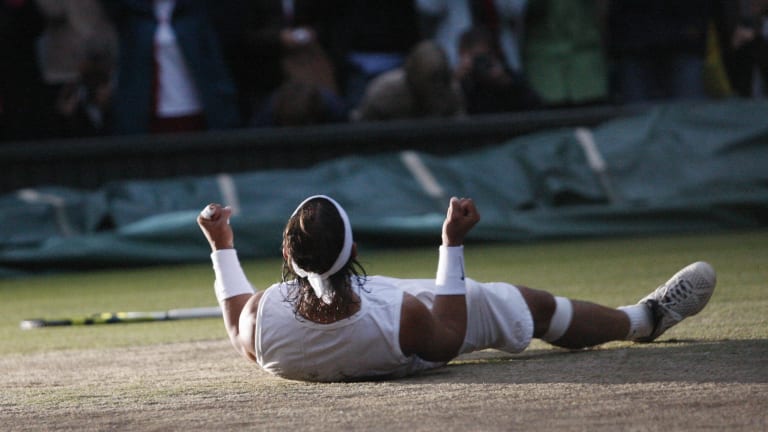
Before Federer & Nadal's 40th match, an oral history of their pinnacle
© AFP/Getty Images
Advertising
Ted Robinson, NBC and Tennis Channel television commentator: It was the greatest sporting event I’ve had the privilege of being a part of. But when it was over, it was about 9:30 p.m., and after all of that excitement, you have to let it all drop. There’s no hanging around, because the tournament is over. When John and I got back to the hotel, the bar was closing, but we got them to stay open. I went up to my room to drop my stuff off. When I was in there, I got a call from John. He said, “Come over to my room.”
I walked in and he gave me a beer. We each cracked one, and sat down for a few minutes—we needed to decompress. We were quiet, and then John looked at me and shook his head, and said, “We’ll never see anything like that again.”
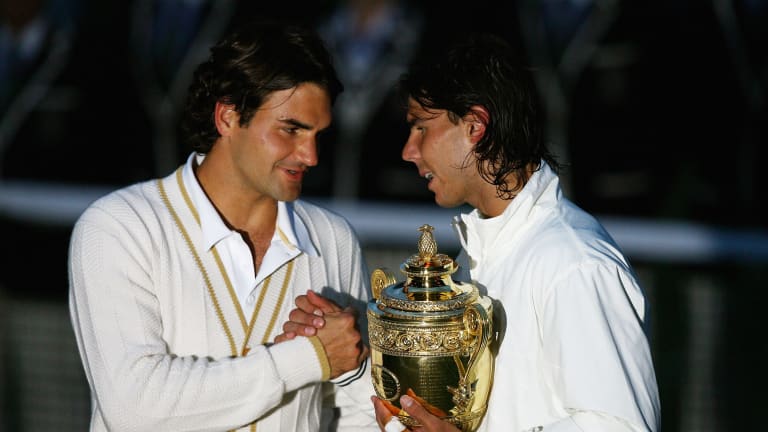
Before Federer & Nadal's 40th match, an oral history of their pinnacle
© 2008 Getty Images
Advertising
This Friday, the two longtime friends and rivals will battle once again on the same court where their last grass-court clash took place. After all these years, Federer and Nadal have continued to challenge each other in some of the most prestigious tournaments around the world. With Federer holding 20 Grand Slam trophies, and Nadal with 18, the Spaniard will try to inch closer to narrowing the gap. Will he, or will the eight-time Wimbledon champion come out on top? The story continues this Friday.
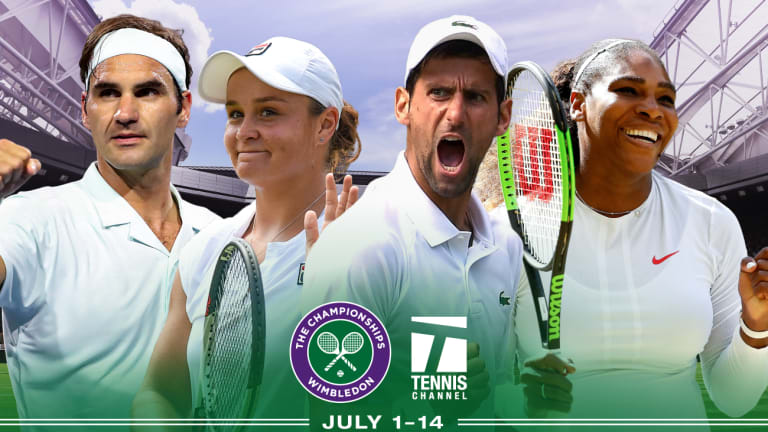
Before Federer & Nadal's 40th match, an oral history of their pinnacle